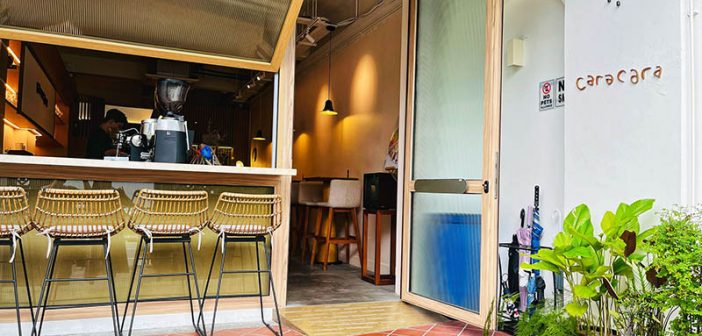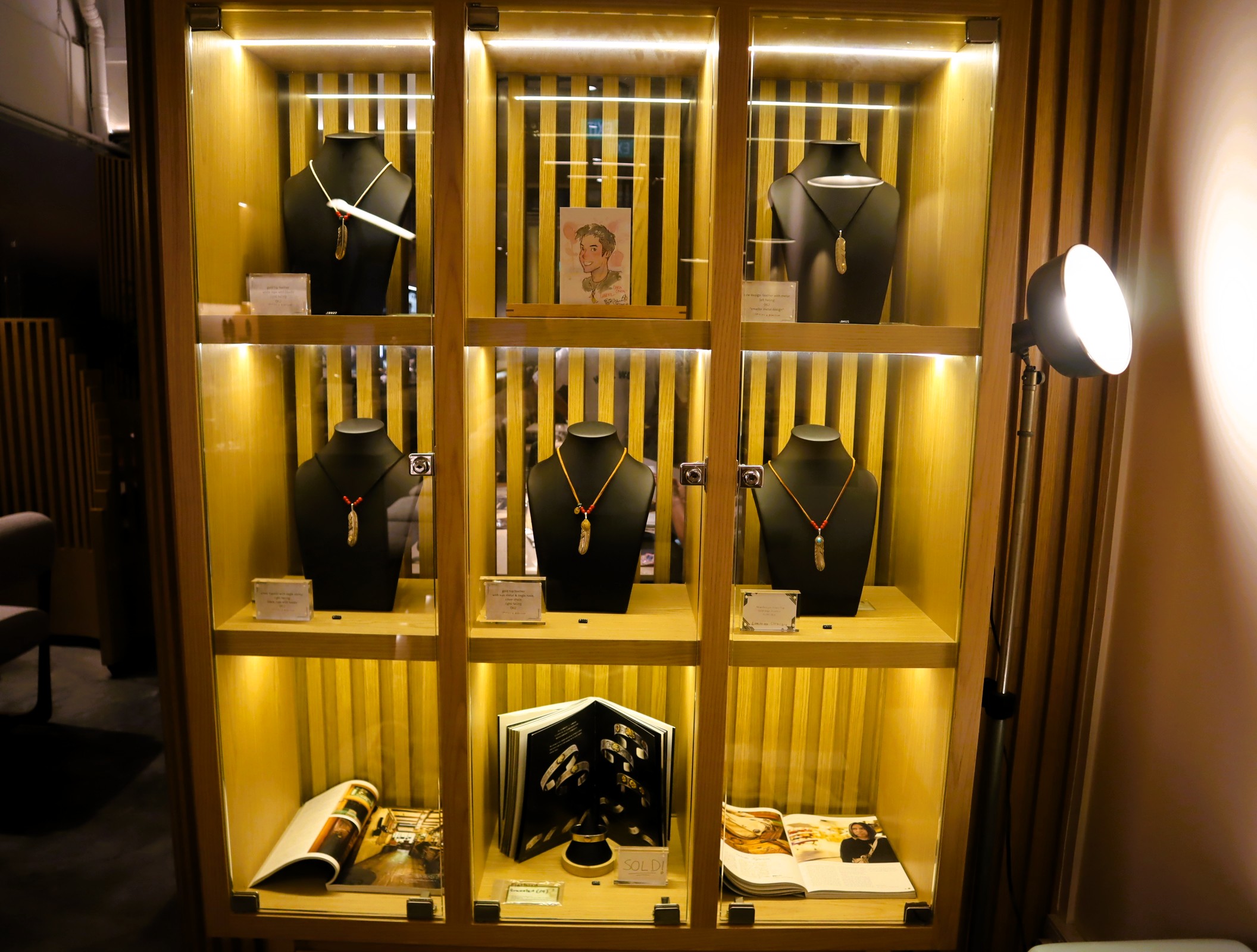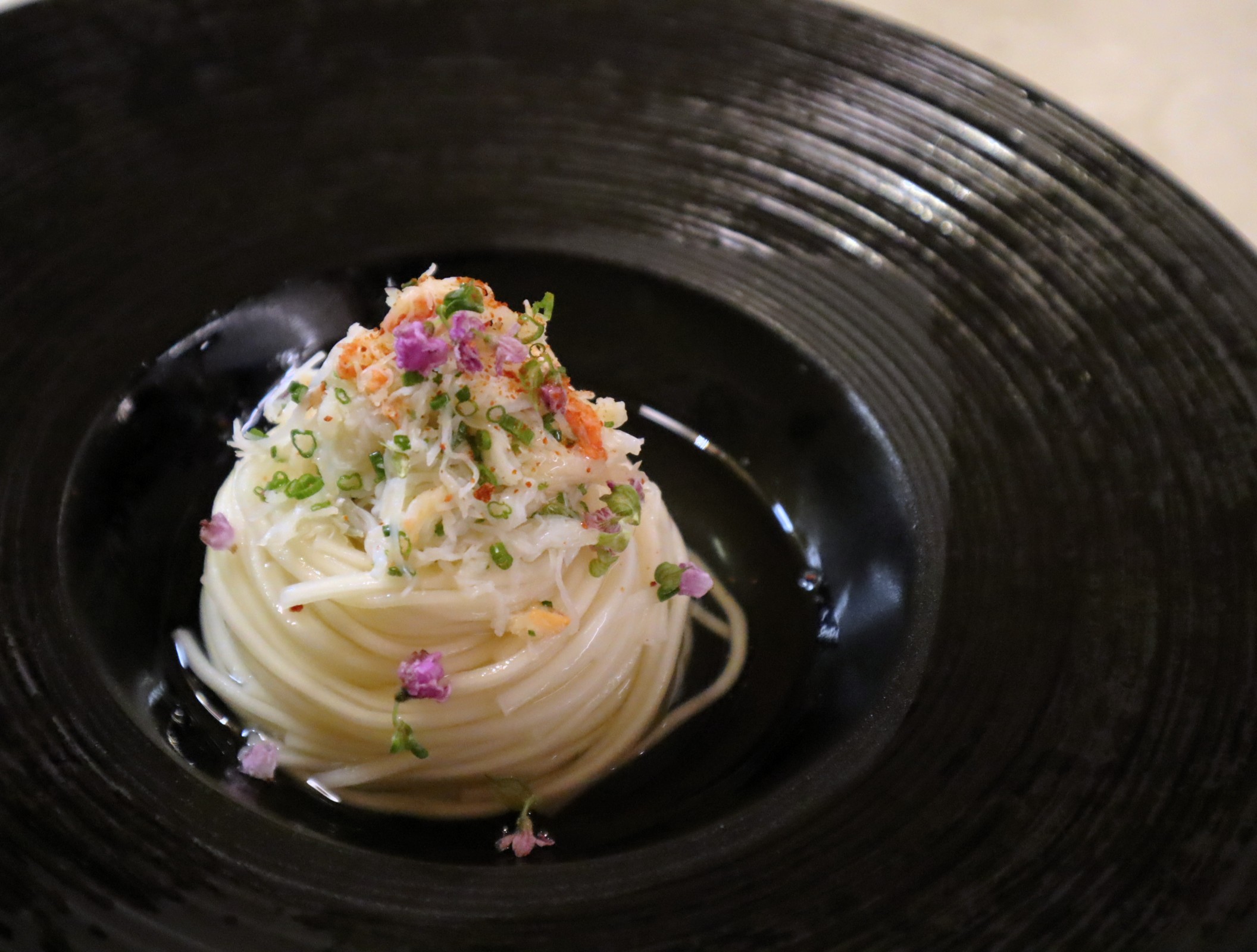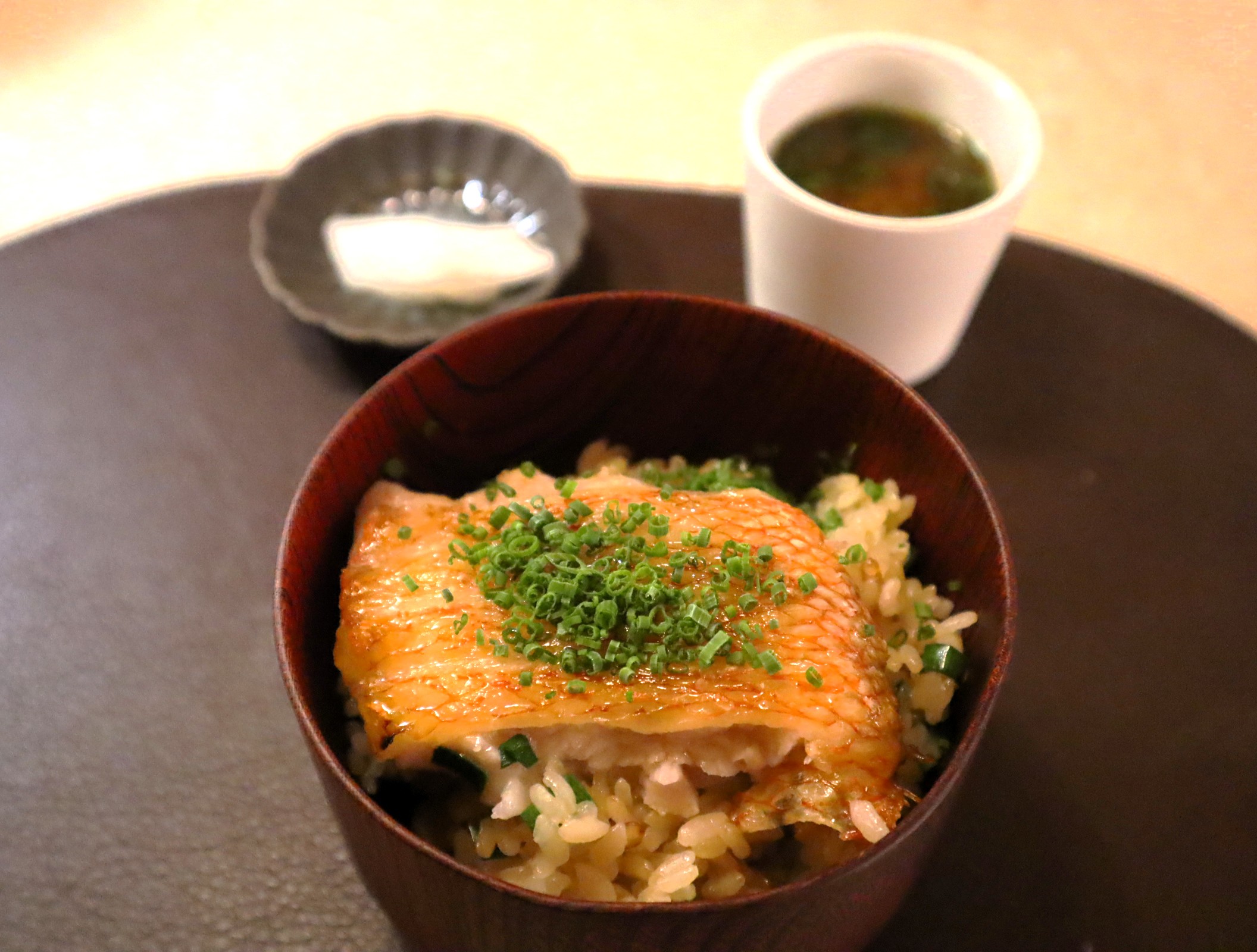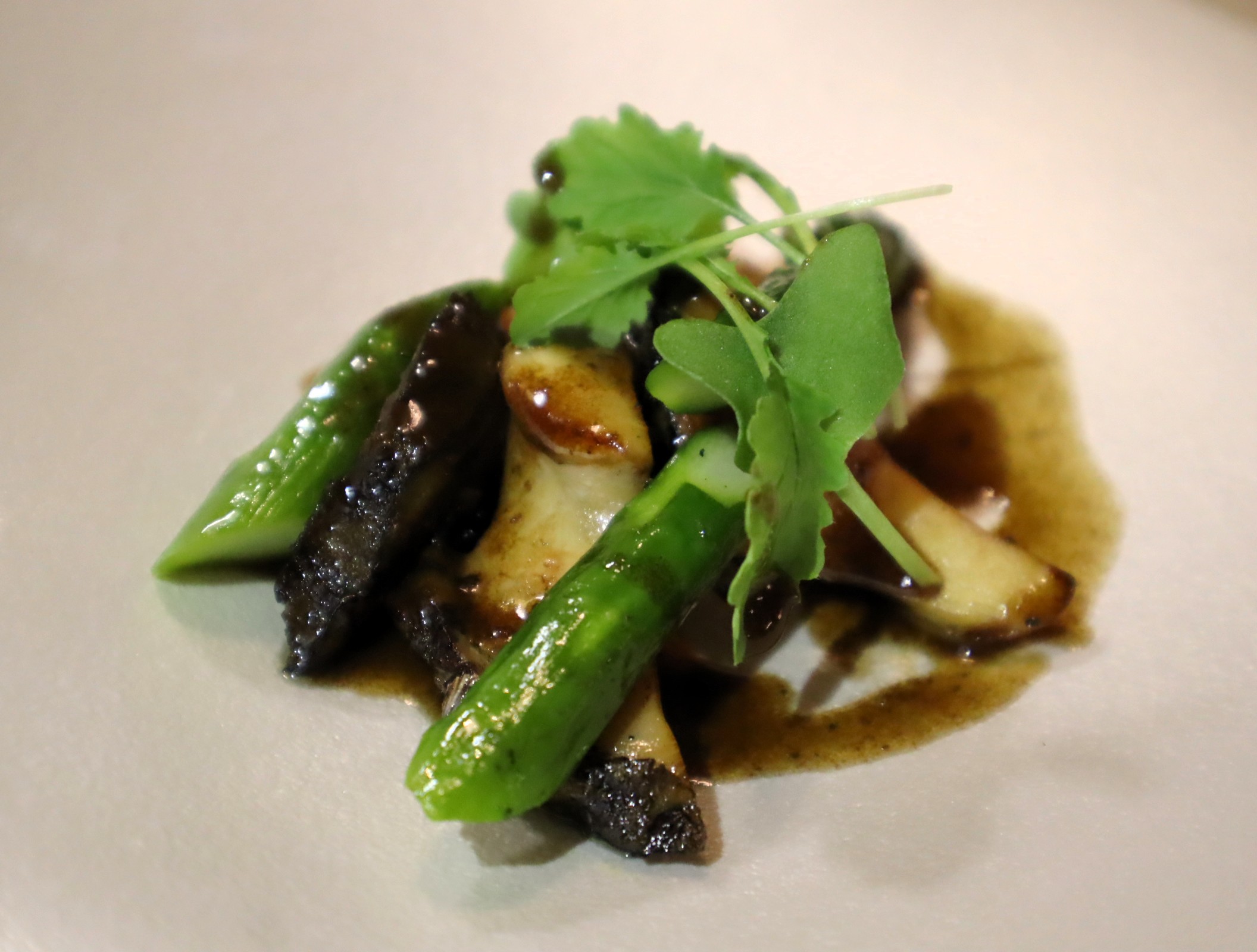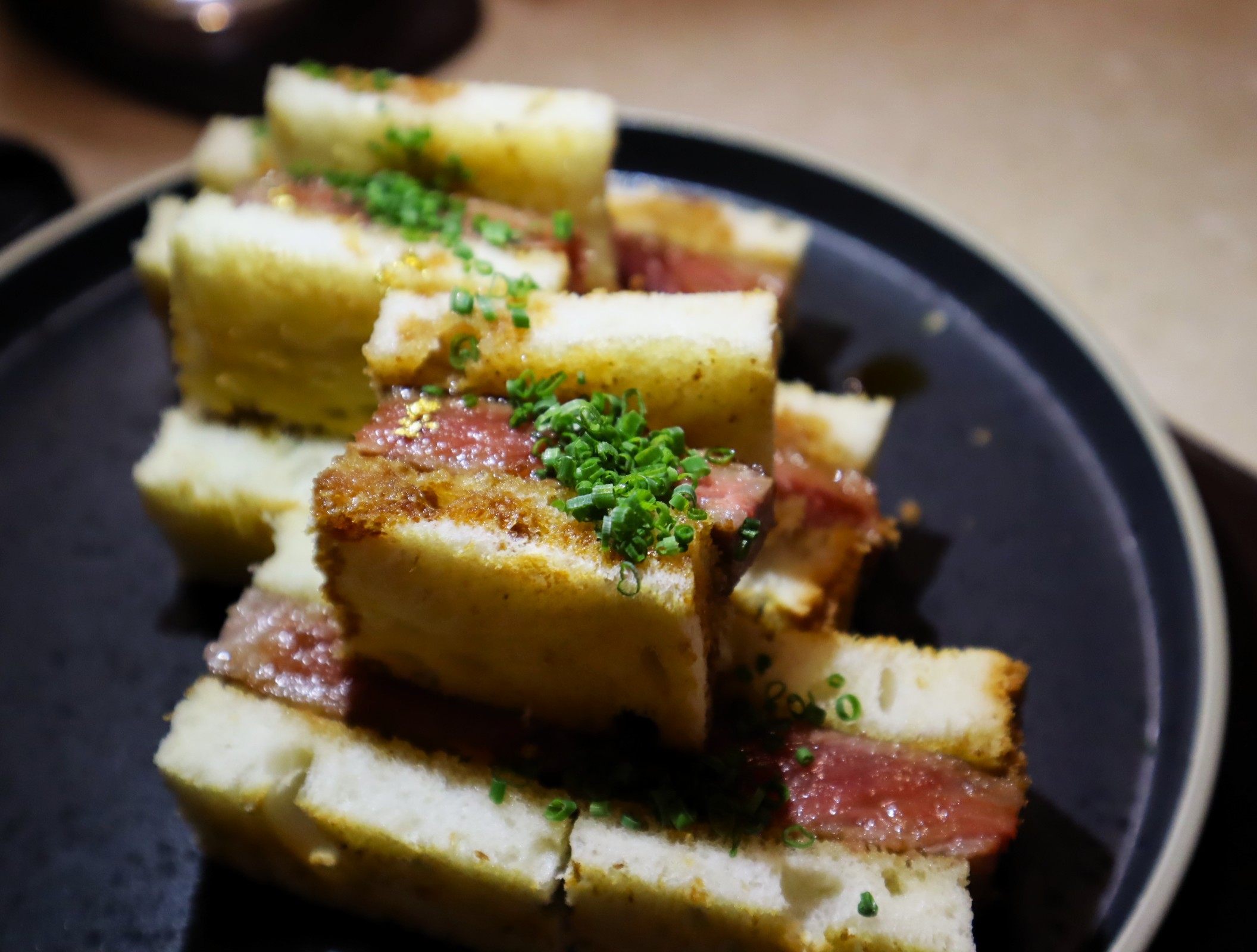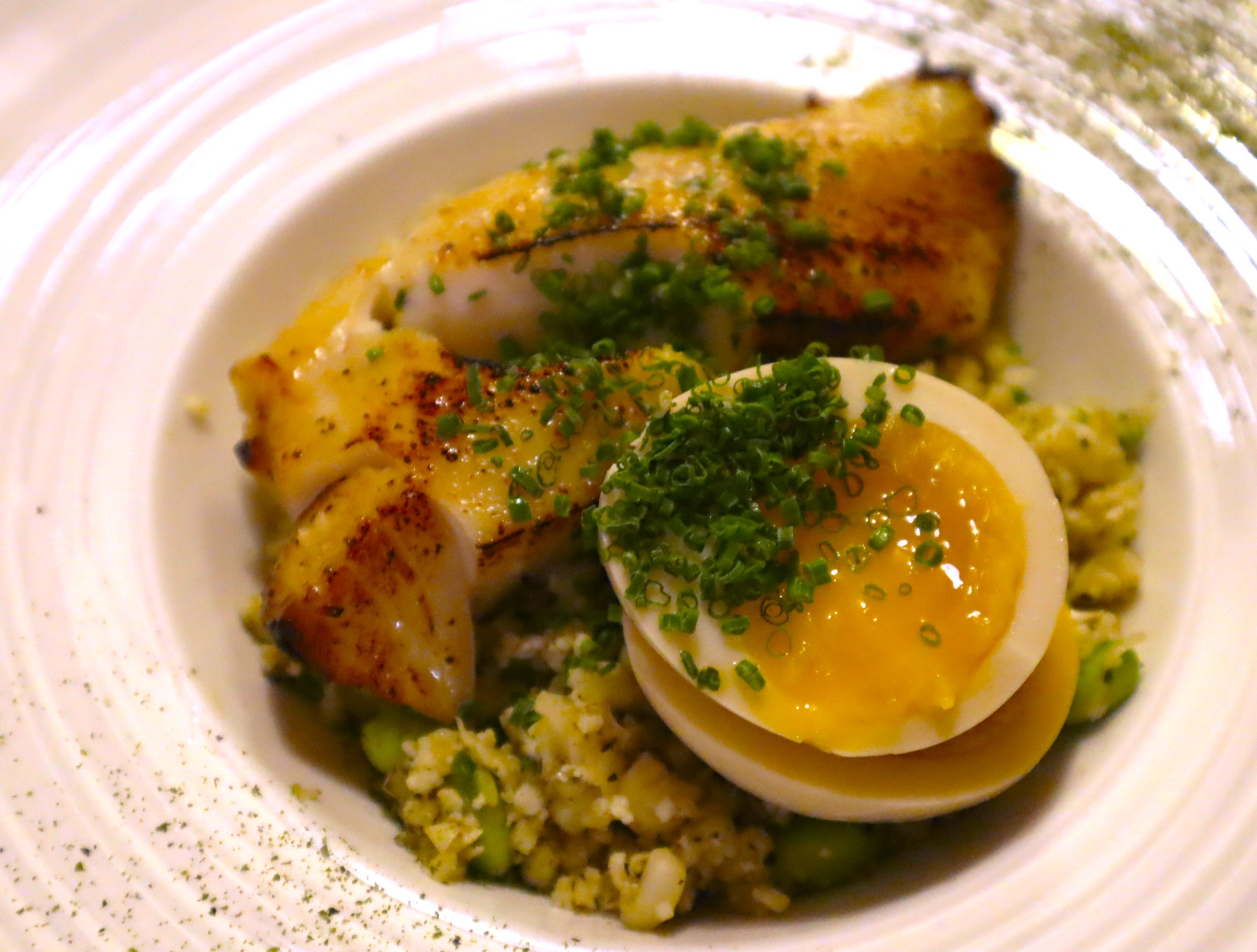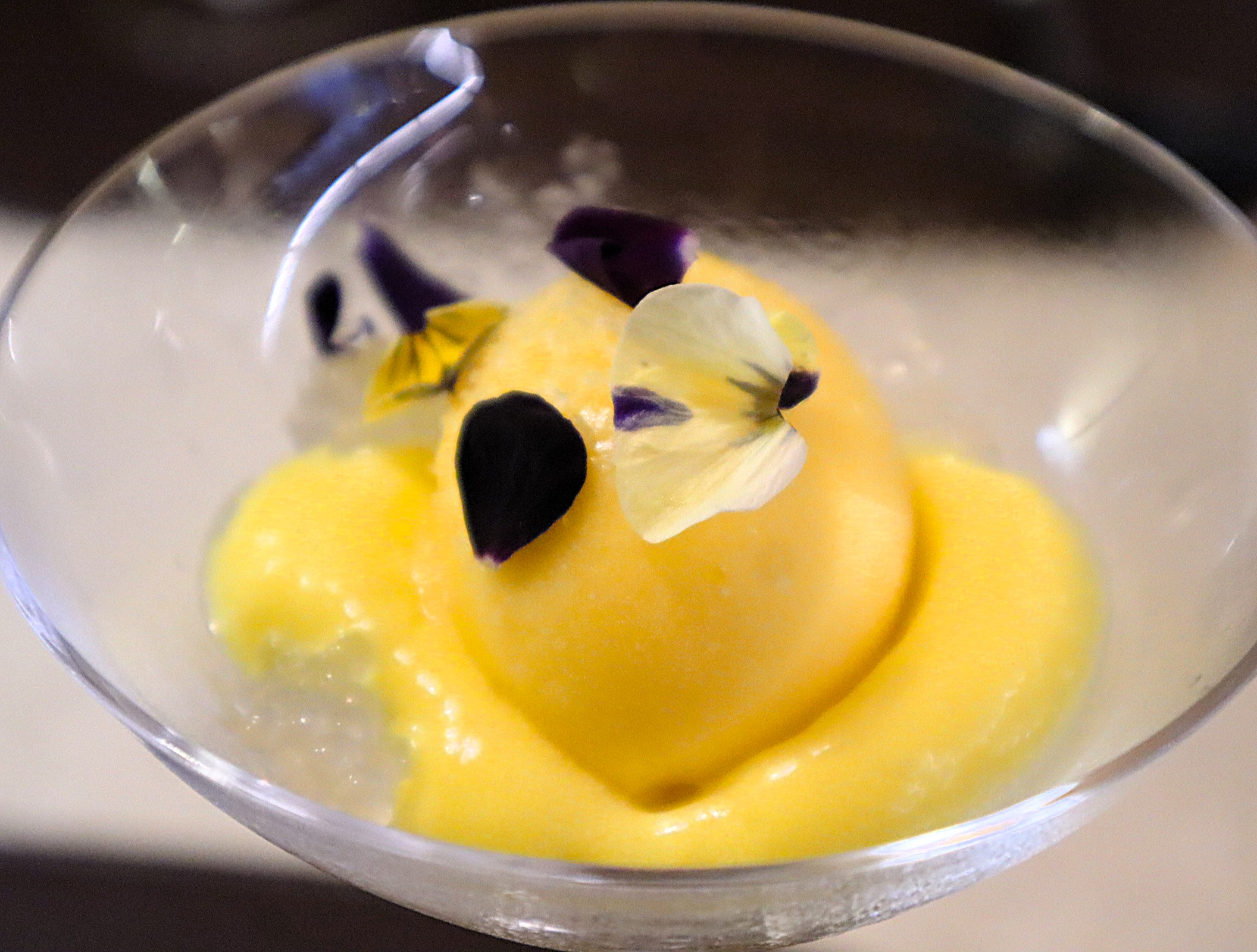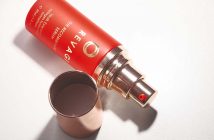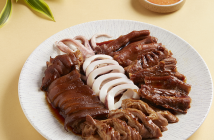Stepping into Caracara, a Japanese restaurant at a charmingly restored Neil Road shop house, one is immediately struck by the attention paid to design and furniture. There’s something I can’t put my finger on, but it gives off the casual yet refined vibes of a boutique hotel that makes for a cafe setting by day, and a refined dining experience at night.
As it turns out, Caracara’s founder Gabriel Tan does have solid design chops–the hotel is outfitted by Falcon Incorporation, the high-end furniture fitting out luxury hotels ranging from Mondrian Singapore to the Grand Hyatt. Evidently our dining experience tonight will not only be a feast for the palate, but also the eyes.
The restaurant marked its first anniversary in July 2025 and has launched a ‘Carakase‘ prix-fixe dinner menu (S$138+ for two pax) to celebrate the occasion. However, I was partly distracted by the bespoke interiors, having moved from the furniture and cutlery display near the counter – pieces are for sale, we’re told – to the showcase of Goro Takahashi jewellery that Tan collects.
In partnership with DELTAone Japan, a Goro reseller, Tan presents a curated Goro showcase within the restaurant space. The late craftsman was known for his Native American-inspired silverware, worn by artistes like Eric Clapton, John Mayer, and Ed Sheeran. It is apparently not easy to get one’s hands on a Goro piece in Japan, but you can do so right here at Caracara.
We begin our dinner with specialty drinks by Andrew the barista (not included in the prix fixe menu). For someone who currently is abstaining from alcohol but loves teas, I was perfectly attuned to my companion and I sharing her refreshing Lily Lush (S$13), a light, floral and fruity concoction made of white lily tea, elderflower, with passionfruit, red grapefruit and topped with lemon. For balance, I picked the Hojicha Peanut Butter Cloud (S$13), a thick and rich concoction of peanut butter and oat milk (sake and other alcohol are also available to pair). Looking at the coffee brewing accessories at the counter, it’s evident that Caracara is also serious about its joe–definitely a place to revisit for an afternoon cuppa.
In the latter half of the meal, we also tried the Calamatcha (S$15), a zesty and tangy mix of matcha, calamansi, osmanthus, flowers and soda water. It makes for a great thirst quencher whose citrusy notes went down extremely well with the mains, rimmed with salt for an added kick.
After we were finally settled with drinks and design diversions aside, Head Chef Kian Hong’s pretty creations for our Carakase start to arrive. The first, a seasonal tartlet consisted of tiny cubes of raw tuna nestled in a crisped up wafer, topped with edible flowers – and that would not be the first blossoms featured in the food tonight–that we popped easily into our mouths.
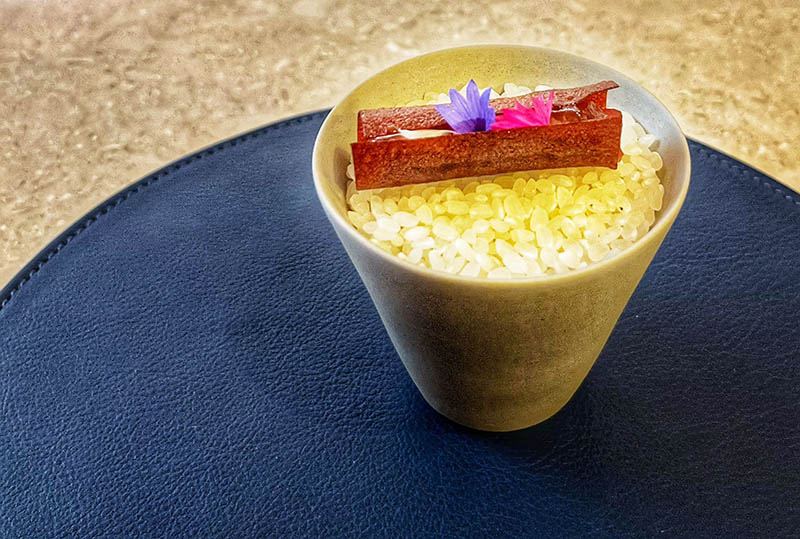
Seasonal Tartlet. Photo © Katherine Goh
The name of the next course reflected Chef Kian Hong’s intention to weave in a local take into his Japanese-inspired cuisine. ‘Kopi Roti’, is a delicious round hunk of warm sourdough that comes with two spreads – one silky coffee butter and another konbu butter. Both are delicious although I preferred the more savoury konbu, but the bread is the real star.
Concerns over carbo-loading aside, both my dining companion and I surrendered ourselves to finishing the entire portion of our bread. In case you need more bread, it is also available a la carte (S$8).
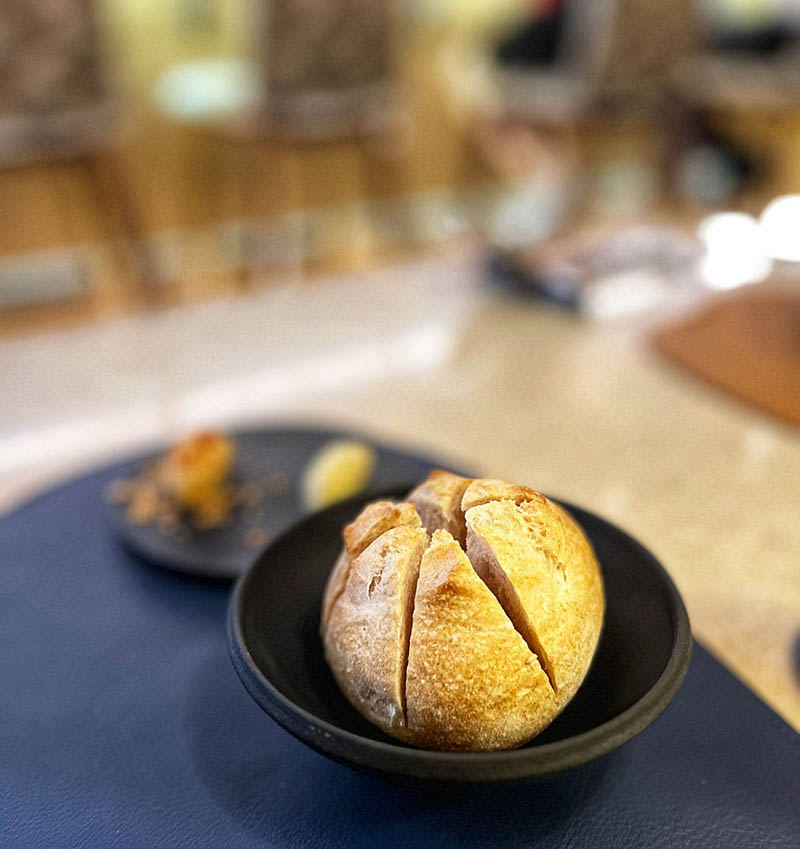
Kopi Roti. Photo © Katherine Goh
The third appetiser we tried was Hiyashi Somen, a refreshing chilled somen in a tomato dashi, topped with fresh zuwai snow crab. This left less of an impact, but it was light enough for us and interestingly, featured more edible flowers, overall serving as a good palate cleanser for the stronger flavours to come.
Next, we were on to the mains, first with a dish called ‘Satay’. Chef Kian Hong notes that in this SG60 year, he wants to honour Singapore’s roots by ‘reinterpreting some of our local dishes through a neo-Japanese lens’ and this dish continues in the same vein from Kopi Butter. This was a tender and easy-to-like marbled Hokkaido pork collar with satay sauce, topped with crisp slivers of cucumber and onions like the accompaniments for our classic local skewers.
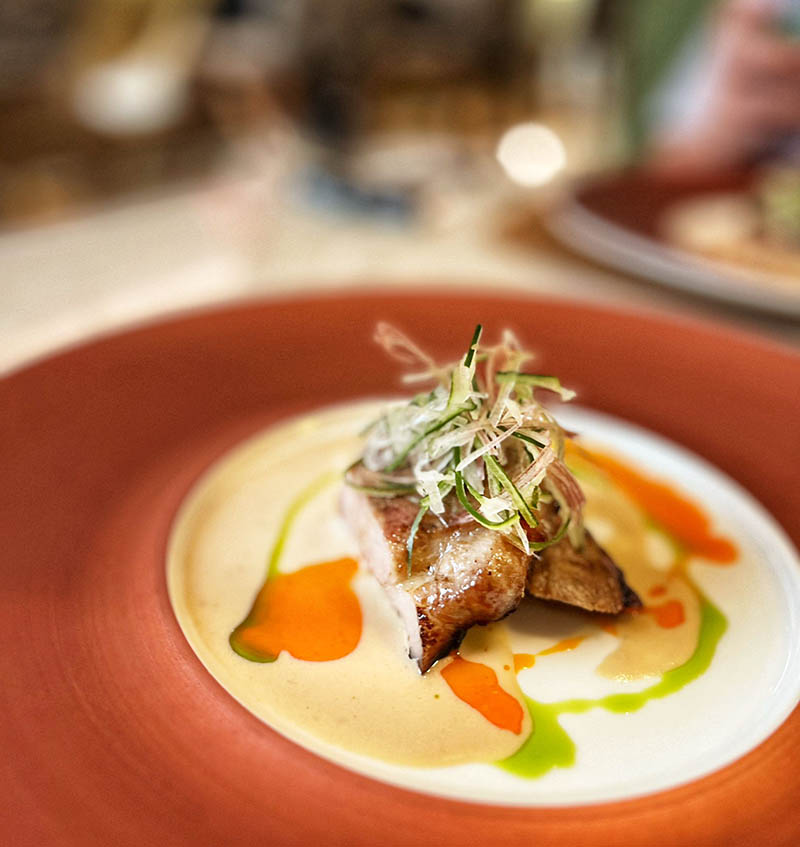
Satay. Photo © Katherine Goh
The Fish of the Day was a chunk of tilefish; its layer of scales was cooked to a crispy, edible layer while the flesh remained tender. For this option, Caracara opted for a simple preparation to let the natural freshness of the fish shine. It was enhanced with a chilli sauce that reminded me a little of chicken rice chilli, in yet another Singapore spin.
The prix fixe menu includes a Donabe (Japanese claypot rice) dish. I had let go of my usual penchant for Wagyu (the A5 Wagyu with white corn donabe) dish in favour of the Kinki fish with burdock roots (additional S$40 for two pax), since Chef Kian Hong seemed to have interesting ways with seafood.
No regrets here, because Kinki fish, found only at depths of 200-500 metres is really prized and hard to get. Even in Japan, most of the Kinki catch is only found near Hokkaido. Kinki fish feed on shrimp, which gives it its signature red hue. They taste fatty and buttery, similar to the richness of cod, also a deep sea fish. The taste of the opulent and creamy kinki contrasting with the crunchy burdock and fluffy rice grains. This dish was unforgettable.
If you are willing to shell out an additional S$38 per pax for the ‘Awabi’ (abalone) during your Carakase, you will be rewarded with slices of the pan-seared marine gastropod in ultimate luxury – a sauce made of its liver and reduced red wine, together with seasonal vegetables. I promptly wiped out mental images of the usual stewed abalone I had for Chinese New Year. This burgundy awabi dish has seared into my memory what abalone should be. We could not decide if the Awabi or Kinki course was the more lavish for tonight. Probably both, and we were lucky for them.
I was still able to get my beef fix tonight because we were offered a chance to try something from Caracara’s signature lunch offerings. Having already swooned over the previous few seafood dishes, we went straight for the Wagyu Sando (S$58), a substantial stack of finger sandwiches comprising A5 Kagoshima Wagyu Sirloin, caramelised onions, house-made shokupan with a dusting of edible gold. Simple, buttery and delicious, we polished them off despite what we’d already had for dinner. A Pork Sando (S$26) version is also available.
Nonetheless, given Chef Kian Hong’s impressive work with fish, another wise choice for lunch at Caracara could be the Miso Gindara (S$28), silken black cod marinated with in house miso, paired with cauliflower couscous and served with soft-boiled ramen egg.
We concluded our very satisfying ‘Carakase’ dinner experience with a refreshing ‘Mango Sago’ finale made of mango sorbet, pomelo granita and a cloud like mango foam. Although nowhere as noteworthy as the precedent courses, it was a fitting and refreshing end to a meal that offered many surprises.
One thing that jumped out at me about the Carakase dinner was that if you belong to the category of diners who don’t quite take raw or sashimi, this Japanese-inspired menu still works well with the cooked dishes and is varied enough to accommodate dietary restrictions. I surprised myself too by thoroughly enjoying the excellent cooked fish dishes, which I rarely go for in the presence of other meat options. What we ate here at Caracara was satisfying, unpretentious and also healthy, in a heritage and design-driven setting that is both elegant yet accessible, for dining by day or night.
Caracara
77 Neil Road
Singapore 088903
Opening Hours: Wednesday to Monday: 11am – 10.30pm; Closed on Tuesdays

